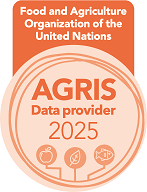Assessment of the impact of two different subcutaneous vaccinators on the application of a dual-construction rHVT-ND-IBD vaccine measured by next generation sequencing
Keywords:
Subcutaneous, Vaccination, HatcheryAbstract
In the poultry industry, vaccination of the birds is an important step to ensure health, animal welfare and productive performance. For greater effectiveness, any vaccination program needs to take some factors into account, such as the quality and suitability of the vaccines to the needs of each flock and their correct administration. In broilers, the use of vaccines applied in ovo at 18 days of incubation, or subcutaneously at hatch, is a common practice. With the aim of evaluating two different vaccination devices for subcutaneous vaccination at day-old broiler chicks, a comparative study was carried out. This study was designed including the vaccination of day-old chicks against Marek, Newcastle and Gumboro with a double-construction vectorized vaccine rHVT-ND-BD (Innovax®-ND-IBD, MSD Animal Health). 30.000 one-day-old chicks were used, divided into 2 experimental groups of 15.000 birds each. The Group 1 (G1) was vaccinated with the subcutaneous injector Innoject®Pro (FM Automazione, Italy) and the birds in the second group (G2) were vaccinated with a conventional injector, the Marek Pneumatic Vaccinator (Avifag, Brazil). The dosage used in both groups was 0.2 ml/dose, with both groups being vaccinated simultaneously, with the same vaccine solution. After vaccination, the birds were housed in the same building, and received the same management and diet. At 26 days of age, feathers were collected from the breast region (FTA card) in 20 birds from each group, randomly. The genetic material extracted from the bulbs of these feathers was evaluated by next generation sequencing for quantitative and qualitative assessment of the presence of genetic material from the vaccine applied on the first day of life. The results revealed 100 % (40/40) positivity of genetic material in the samples, validating their quality. The analysis to confirm the presence of genetic material corresponding to the rHVT-ND-IBD vaccine in each of the experimental groups resulted in 100 % positivity (20/20) in G1 and 95 % (19/20) in G2. Based on the results observed, we can conclude that both vaccinators are suitable but the performance of the Innoject®Pro equipment seemed to be better in comparison to the conventional vaccinator.
Downloads
Published
How to Cite
Issue
Section
License
Copyright (c) 2025 Sociedad de Medicina Veterinaria del Uruguay-Facultad de Veterinaria, Universidad de la República

This work is licensed under a Creative Commons Attribution 4.0 International License.











